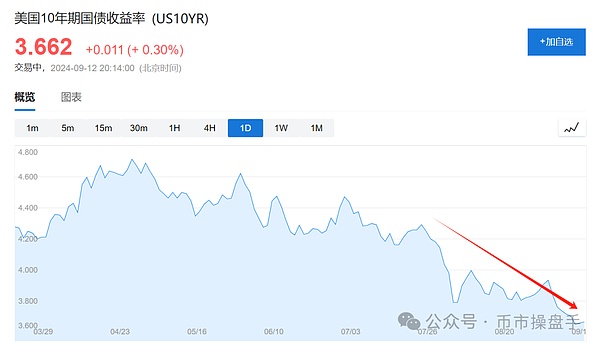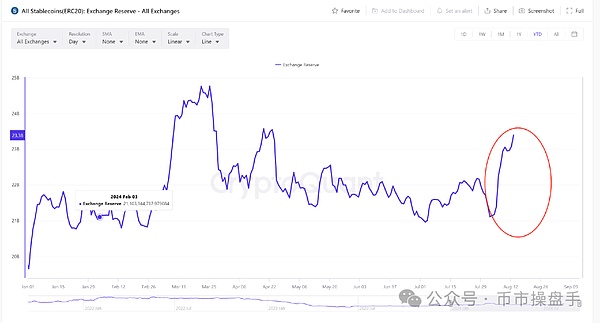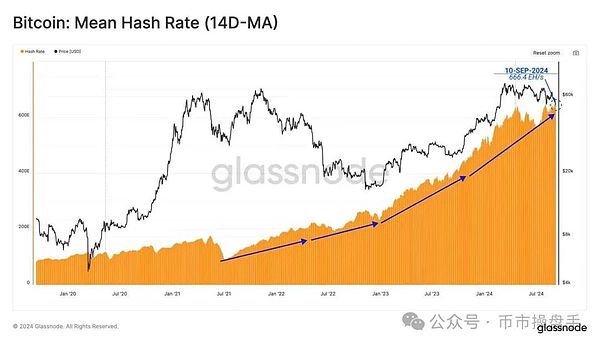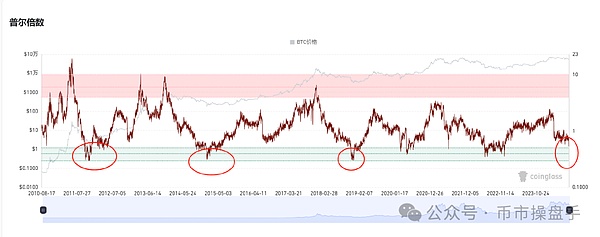This week, Bitcoin gradually stabilized and rebounded after completing its second bottom. Although the rebound process is still very tortuous, the money-making effect of the market has improved significantly, which is mainly reflected in two aspects: 1. Although the price of Bitcoin is still hovering at US$58,000, 30% of the top 100 currencies by market value have The currency returned to the price level of $65,000; 2. From September 5 to September 12, the market share of altcoins increased from 9.13% to 9.8%, and the proportion of daily trading volume also increased from 20.3% to 33.5% %, the market continues to ferment. In addition, unlike previous rebounds that were mainly dominated by MEME coins, the benefits of this rebound are wider. For example, currencies from various fields such as BIGTIME, PENDLE, AAVE, SUI, and FEI have also frequently appeared on Binance's gain list recently. Historical experience shows that when funds shift from focusing on absolute value to taking into account price elasticity, this often signals that market risk appetite is rising.
From a transaction level, the increase in risk appetite of funds is closely related to the marginal improvement in global liquidity. As the Federal Reserve is about to enter an interest rate cut cycle, the yield on the U.S. 10-year Treasury note, the anchor of global asset pricing, has fallen rapidly since the end of July. At the same time, the balance of stablecoins on exchanges also increased significantly during this period, indicating that some foresighted investors have begun to place interest rate cut transactions in advance. According to statistics from CryptoQuant, the last time there was a large-scale increase in the balance of stablecoins on exchanges was in March 2024. At that time, altcoins also experienced a strong rise, which is quite similar to the current situation. As of September 12, the U.S. ten-year Treasury bond yield has dropped to 3.662%, setting a new low since June 2023. According to the pricing of federal funds rate futures, the market expects this round of interest rate cuts to be 225 basis points, so the yield on the U.S. ten-year Treasury bond still has room to fall in the future.


Currently, the rebound of altcoins is still in a mixed stage, and almost all sectors that were severely oversold in the past have opportunities for restorative rebound. For example, the NFT (blue chip) sector, which has been declining for two years, has generally seen floor prices rise by 15%-25% in the past month. APECOIN, which was considered to be chronically dead by the market, also experienced a nearly doubled increase in this round of rebound. However, the author believes that this general rise may not last too long, and the limited funds in the market will eventually flow to those sectors whose fundamentals have improved or the industry is still expanding rapidly, such as DeFi old leaders, DePIN, RWA, etc.
Since August, although the price of Bitcoin has continued to fluctuate and weaken, it was even close to the shutdown price of miners. , but the Bitcoin network’s hash rate continues to maintain record levels, indicating that miners continue to increase investment in hardware and maintain confidence in Bitcoin’s long-term trend. For example, Marathon Digital, one of the world's largest mining companies, has stopped selling Bitcoin since June and continuously increased its holdings of Bitcoin worth $249 million in July and August. Marathon Chairman and CEO Fred Thiel said that the company’s comprehensive HODL strategy is based on its firm belief in the long-term value of Bitcoin and aims to provide a safety cushion for unforeseen market fluctuations by optimizing the balance sheet. Judging from Marathon's completion of US$300 million in convertible notes in just one month, shareholders and creditors are basically supportive of the company's strategic transformation. If Marathon wants to follow MicroStrategy's example and anchor the value of the company's stock to Bitcoin, there will surely be multiple rounds of financing in the future.

Although miners are often viewed as the "forced sellers" of the market, fluctuations in their income can significantly affect their willingness to sell Bitcoin. Typically, if miners believe that the price of Bitcoin is overvalued during a certain period, they will tend to sell more Bitcoins to obtain higher profits. When the price of Bitcoin is undervalued, miners may choose to reduce sales or temporarily "cover the market" and wait for the price to recover. Therefore, the Puell Multiple, an indicator calculated by dividing the daily issuance value of Bitcoin (in USD) by the moving average of the past 365 days, is often used to analyze Bitcoin cycle changes. When the P/P multiple is lower than 0.5 (green area), it indicates that the price may be undervalued and suitable for investment; while when the multiple is higher than 4 (red area), it indicates that the price may be overvalued, which is an ideal profit opportunity. Currently, Bitcoin's P/P multiple is 0.51, which is at the critical value of undervaluation, indicating that the market may be about to enter a new accumulation period.

In terms of operation, with the completion of the mid-term bottom, the market has gradually entered a stage of moderate recovery. Although the rebound did not show a dry land-like rise, it was precisely this slow-heating state that verified the sustainability of the rising market. After all, in the stock pattern, every concentrated outbreak of bullish sentiment is often a signal that the market peaks in stages. Therefore, repeated washouts and steady progress are the most ideal manifestations of bottom rebound. Only by remaining patient can we wait for the Lord to rise.
 JinseFinance
JinseFinance





